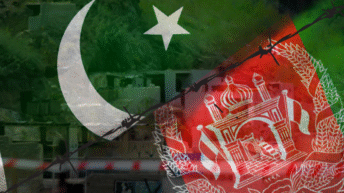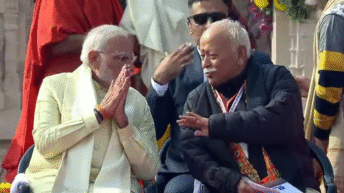
A State is a political entity. In political science, we learn that population, territory, government, and sovereignty are essential elements of a State. The formation of a State is a politico-legal exercise. It is constituted by a legal document, which, in most cases, is the Constitution. The State is the governance mechanism which governs the “population.” However, the population of each State has a distinct identity. It has its history, its culture, which helps distinguish it from other sets of populations. This identity of the population, its history, its culture, is often reflected in the Constitution of the State. Historical experiences often shape the Constitution. When the sovereign power changes hands, or when, after a revolution a new regime is established, the new regime often adopts a “break from the past” approach. This new regime sanctifies its existence through a document which is commonly referred to as the Constitution. The latter reflects the morals and ideals which are at that point in time considered sacrosanct. These morals and ideals are often moulded and shaped by the historical experiences of that civilization. For example, the German Basic Law, which is the successor of the Weimar Constitution, contains an eternity clause. This eternity clause ensures that certain value principles would be beyond the amending power of the amending body and can hence never be abridged or abrogated. These principles, such as the democratic form of government, human dignity, etc. were made unamendable due to the experiences of the Hitler regime. Thus, historical experiences shape the formation of the Constitution. Sometimes, these are reflected in the text of the Constitution, sometimes they are not so explicit.
Identity of the population, its history, its culture, is often reflected in the Constitution of the State. Historical experiences often shape the Constitution
These historical experiences, cultural identity, traditions, etc. together constitute the identity of the population and tell us the “Constitutional story.” What then, is India’s Constitutional story? Is it reflected in the Constitution? What is its relevance to the interpretation of the Constitution and the laws? These are some pertinent questions upon which the academia and the scholars of constitutional law in India must deliberate. Scholars such as Liav Orgad, Gary Jacobsohn, George Fletcher, Jan- Werner Muller, Azar Gat, Alexander Yakobson, etc. have carried out seminal works on the issues of constitutional identity and constitutional story.
Historical experiences, cultural identity, traditions, etc. together constitute the identity of the population and tell us the “Constitutional story
India’s constitutional story can be understood in three phases. The first phase is very significant. This phase tells us about our culture, our heritage, our traditions, our value systems, etc. It is this first phase of our story that tells us about our national identity. The second phase would include the British colonial period and the Islamic invasions before that. The national identity highlighted in the first phase has attained a higher degree of relevance due to the events that unfolded in this phase of invasions and colonialism. The third phase would contain the events that unfolded in the few years preceding the making of the Constitution. The partition of India and the formation of Pakistan, a separate Islamic nation, is the most prominent event in the years immediately preceding the making of the Constitution. This is a very vital part of our Constitutional story, one which qualifies as a dark episode. It is pertinent to note that the first phase pervades the period of the second phase and the third phase and travels much deeper in history. These three phases combined, tell our Constitutional story.
In our original constitution, there are paintings depicting scenes from Ramayana, Mahabharata, etc. Unfortunately, in interpreting the Constitution, little or no significance is attached to our Constitutional story. The Courts have evolved concepts, doctrines and theories such as Basic Structure, Transformative Constitutionalism, due process, etc. to interpret the Constitution and test the validity of laws on its anvil.
In our original constitution, there are paintings depicting scenes from Ramayana, Mahabharata, etc. Unfortunately, in interpreting the Constitution, little or no significance is attached to our Constitutional story.
Our Constitutional story could be very relevant when contentious legislations such as the Citizenship (Amendment) Act 2019 (CAA) are challenged before the Court of law. It could also be relevant in shaping the overall development of our jurisprudence. It is noticed that there is a tendency to rely on foreign jurisprudence while interpreting our Constitution. Whenever contentious issues of far-reaching importance are debated before the Supreme Court of India, a significant portion of the debate is influenced by the development of jurisprudence in the foreign jurisdictions, particularly the Western jurisdictions and specifically the Anglo-Saxon ones. In the domain of jurisprudence and interpretation, India has a lot to offer. What is it, in our existing constitutional jurisprudence, which we can claim as our very own? What is our unique contribution to the development of the world jurisprudence? Unfortunately, there is not much that we have offered to other nations in this particular domain.
Whenever contentious issues of far-reaching importance are debated before the Supreme Court of India, a significant portion of the debate is influenced by the development of jurisprudence in the foreign jurisdictions.
The induction and mainstreaming of India’s constitutional story in its existing constitutional jurisprudence would not only contribute to the development of jurisprudence world over but also ensure that India’s unique identity and the historical realities that have shaped it in its present form, as a State and as a Nation, have a role to play in the growth of India’s constitutional order.






Agreed most of the part of it. Unfortunate thing happened when india partition and pakistan formation that education system in india goes on some politicians hands who ever never ready to teach Ramayanam and mahabharath in the students books. They were deeply injected one thing is SECULARISM in indian kids at that time when we got independence , the sin results now those parties we cannot see in the parliament now I would not afraid to tell those parties names called LEFT. I may the person who is from SANAATHANADHARMAMAM but I proudly say that my india is combined with lot of religious and castes and many languages and cultures , but when time running these left parties lost their identities but their educational stuff is still is successfully running in india , these has to change, one more thing selfish politicians are amending the laws according to their knowledge and to gain themselves . By this only mistake world is calling india as DEVOLIPING COUNTRY still we are developing , according to e these two things has to be change with immediate effect 1 is education system and 2 politicians mindset
“lot of religious and castes” why do you have to bring in castes here? its best if we treat caste as concept that is solely relevant to sanathana dharma itself and not to the whole bharat which also consists of jains, sikhs, buddhists, christians, muslims, so on… Also hinduism ≠ sanathana dharma.
Request please make this larger than life but make sure our future coming generation will be not confused nor no one can challenge legally on any court. Jai Shriram.
Too good
It is the problem of nearly every Indian that they don’t know about the constitution of India is based on shariyat not over Indian roots.the history that our Constitution believes is up to Islamic invasion.beyond that there was a Great India and Indian culture. Indian culture believes only on truth. Are you know that Ramayan mahabhart are not Indian history they are created in the regime of AKBAR to glorify islamic culture. The Rama of ramayan is HUMAYUN and KRISHNA of mahabhart is Babar. The so called holy book Geeta in real is a mere translation of quran which being used by so called courts to take oth by hindus.the untruthful book is being made to base of judgment than what will happen with judgement?